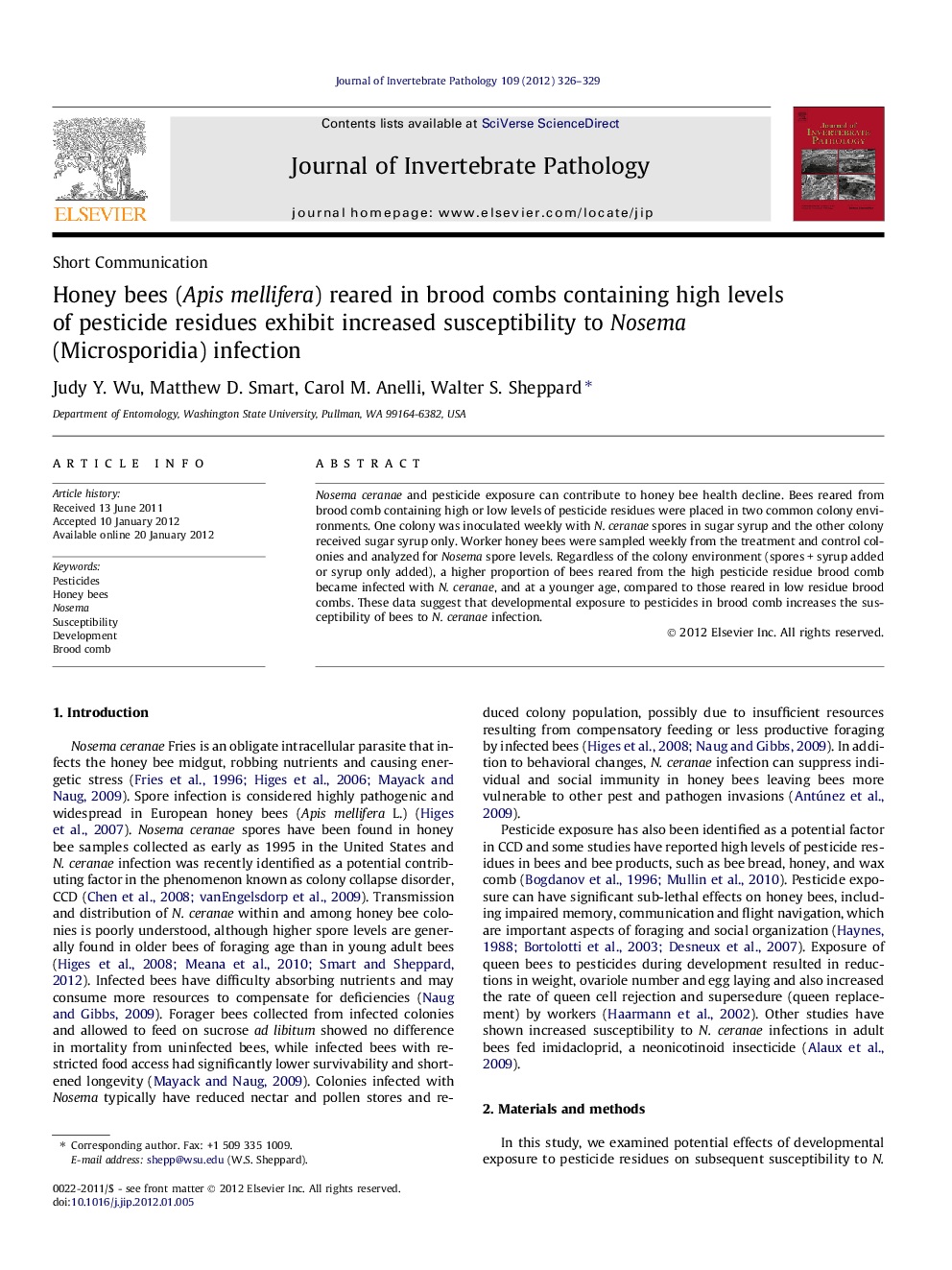| Article ID | Journal | Published Year | Pages | File Type |
|---|---|---|---|---|
| 6389791 | Journal of Invertebrate Pathology | 2012 | 4 Pages |
Nosema ceranae and pesticide exposure can contribute to honey bee health decline. Bees reared from brood comb containing high or low levels of pesticide residues were placed in two common colony environments. One colony was inoculated weekly with N. ceranae spores in sugar syrup and the other colony received sugar syrup only. Worker honey bees were sampled weekly from the treatment and control colonies and analyzed for Nosema spore levels. Regardless of the colony environment (spores + syrup added or syrup only added), a higher proportion of bees reared from the high pesticide residue brood comb became infected with N. ceranae, and at a younger age, compared to those reared in low residue brood combs. These data suggest that developmental exposure to pesticides in brood comb increases the susceptibility of bees to N. ceranae infection.
Graphical abstractNosema ceranae spore infection levels in adult control and treatment bees. Proportion of N. ceranae infected bees (left y-axis) and mean spore level within infected bees (right y-axis) reared from control and treatment combs at week 2-4 post adult emergence.Download full-size imageHighlights⺠We examined the effects of pesticide residue exposure during development on adult honey bees. ⺠Nosema ceranae infections were higher in adult bees reared in high pesticide residue brood combs. ⺠N. ceranae infection occurred at a younger age in adult bees reared in high residue brood combs. ⺠Pesticide residues in managed bee operations may contribute to Nosema infection and colony loss.
